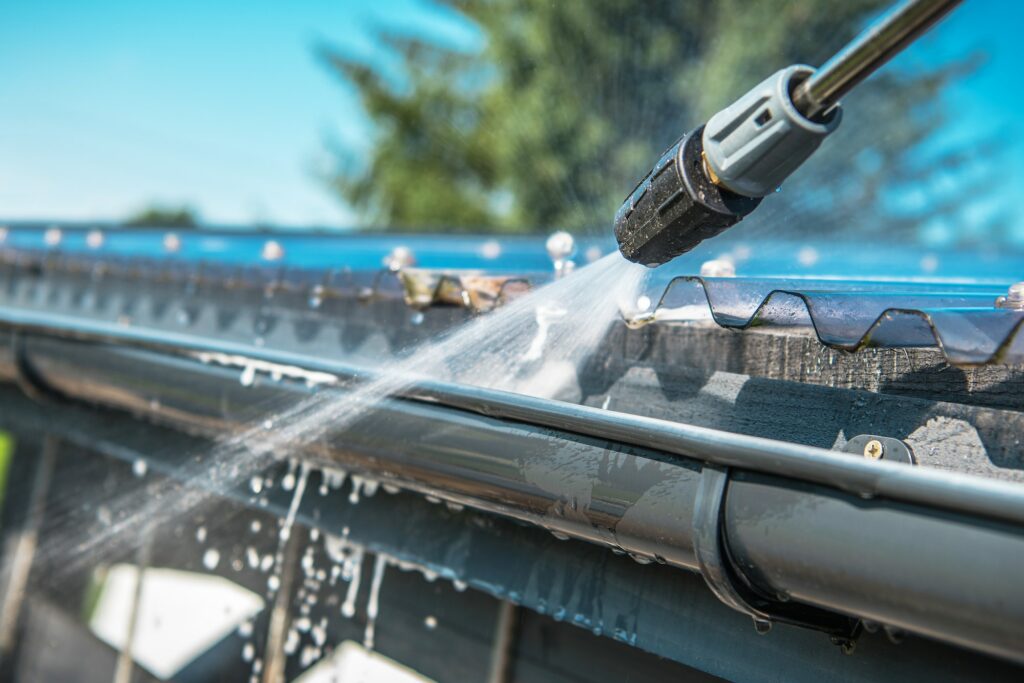Hello, homeowners and DIY enthusiasts! Today, we’re diving into a topic that doesn’t always get the attention it deserves: rain gutter cleaning. This unsung hero of home maintenance is crucial for protecting your home from water damage, deterring pests, and ensuring proper drainage. It’s time to give your gutters the spotlight they deserve.
Why Gutters Matter: More Than Just Rain Handling
First things first, why should you even bother with gutter cleaning? Beyond their obvious role in rain management, gutters play a vital part in maintaining the integrity of your home. They prevent soil erosion around your home, protect your landscaping, and help to avoid basement flooding. Neglected gutters can lead to costly repairs, so a little effort now can save a lot later.
The Consequences: What Happens When You Neglect Gutters
Ignoring your gutter responsibilities can lead to a domino effect of issues. Water overflow can damage your home’s foundation, siding, and even the interior. Clogged gutters are also a haven for pests like rodents, birds, and insects. Plus, the added weight of debris and standing water can cause gutters to pull away from your home or even collapse.
DIY vs. Professional Cleaning: Making the Right Choice
Deciding whether to clean your gutters yourself or hire a professional is a key choice. DIY can be more economical and gives you direct control over the process. You’ll need a stable ladder, protective gloves, a garden hose, and a gutter scoop or garden trowel. However, if you’re not comfortable with heights, or if your home is particularly tall, hiring a professional is safer and ensures a thorough job.
Step-by-Step: The DIY Gutter Cleaning Process
Safety First: Ladder and Personal Safety
- Stability is Key: Before you start, make sure your ladder is on solid, level ground. Avoid placing it on uneven or soft surfaces.
- Ladder Positioning: The ladder should extend about three feet over the gutter line for safe and easy access. Use ladder stabilizers if available, to prevent damage to your gutters.
- Dress for the Job: Wear sturdy, non-slip shoes to prevent slips and falls. Thick gloves are essential for protecting your hands from sharp debris and metal edges. Safety goggles are also recommended to protect your eyes from flying debris.
Remove Debris: The Cleaning Process
- Start at the Drain Outlet: Begin near the downspout or drain outlet for efficiency. This allows you to clear the way for the debris you’ll remove from the rest of the gutter.
- Use the Right Tools: A small plastic scoop or garden trowel is perfect for removing leaves, twigs, and sediment. Avoid metal scoops which can damage the gutter.
- Work in Sections: Move along the gutter in sections, depositing the debris in a bucket or onto a tarp below. This makes cleanup easier and prevents additional mess in your yard.
Hose Down: Flushing the Gutters
- Thorough Flushing: After removing the bulk of debris, use a garden hose with a spray nozzle to flush the gutters. Start at the end opposite the downspout.
- Check Water Flow: Observe how water flows through the gutters and downspouts. If the water doesn’t drain freely, there may be a clog in the downspout.
- Clear Hidden Blockages: If there’s a blockage in the downspout, try flushing it with more force from the hose. If that doesn’t work, a plumber’s snake can help clear hidden clogs.
Inspect for Damage: Assessing Gutter Health
- Look for Signs of Wear: While you’re up there, inspect your gutters for rust, holes, or cracks. Small issues can be patched, but larger areas of damage may require sections to be replaced.
- Check the Supports: Make sure the gutters are securely attached to your home. Tighten any loose fasteners and replace any that are missing or damaged.
- Watch for Sagging Sections: Gutters should be angled slightly towards the downspouts for proper drainage. If they’re sagging, they may need to be re-hung or supported.
Check the Downspouts: Ensuring Proper Drainage
- Ensure Clear Pathways: Make sure the bottom of the downspouts is clear of debris. Downspout extensions should be used to direct water at least three feet away from your foundation.
- Consider Water Management: If you notice water pooling around your foundation, consider additional solutions like a rain barrel or a dry well to manage excess water.
- Regular Checks: Even after cleaning, it’s good to check your downspouts during heavy rains to ensure they’re handling water effectively.
By following these expanded steps, you’ll be able to effectively clean your gutters and protect your home from water-related issues. Remember, regular maintenance is key to avoiding bigger problems down the line. Stay safe and happy cleaning!
Timing is Key: Best Practices for Gutter Cleaning
Cleaning frequency can vary, but a good rule of thumb is to clean your gutters at least twice a year – once in the spring and once in the fall. If you have a lot of trees nearby or experience severe weather, more frequent cleaning may be necessary.
The Big Picture: Long-Term Gutter Maintenance
Consistent gutter maintenance extends beyond cleaning. Regularly check for loose fasteners, reseal end caps and seams as needed, and consider installing gutter guards to reduce debris accumulation. Also, ensure your downspouts are extended away from your house to prevent foundation issues.
The Value of Clean Gutters
To sum up, regular gutter cleaning is a non-negotiable aspect of responsible home ownership. It’s a straightforward task that can prevent major headaches and expenses down the line. Whether you opt for DIY or professional help, keeping your gutters clean is a smart investment in your home’s longevity and your peace of mind.








